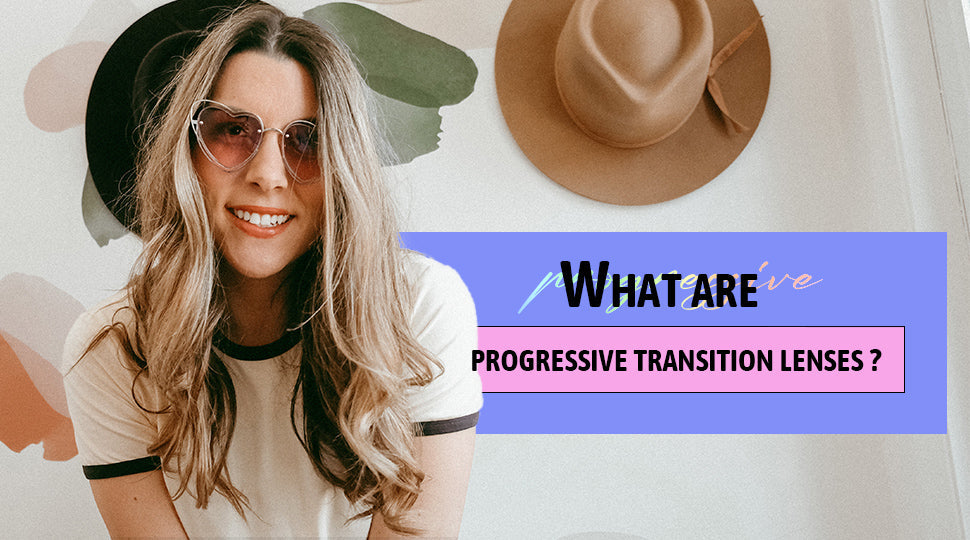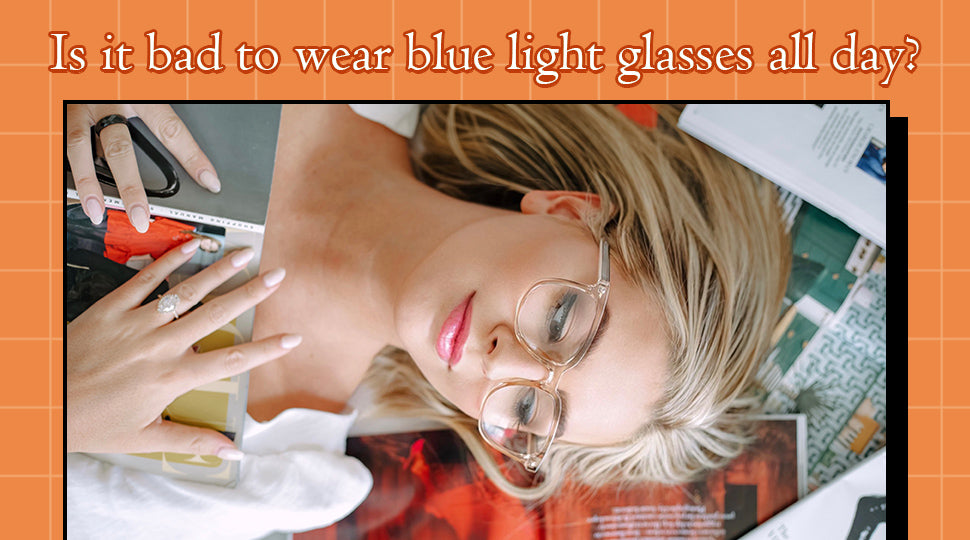
An Ultimate Guide to Progressive Transition Glasses
What Are Progressive Transition Glasses?
The world of eyeglasses can be confusing, and progressive transition glasses are no exception. Progressive transition glasses are a type of eyeglass lens that corrects for both nearsightedness and farsightedness. In other words, they provide a progressive change in prescription from the top of the lens to the bottom. This means you can see clearly at all distances without needing multiple glasses. Let's read about the many aspects of progressive transition glasses to help you choose the right pair.

What Are Progressive Transition Glasses?
Progressive transition glasses are nothing but multifocal lenses that come with progressive addition powers. They are also commonly called no-line bifocals or progressive bifocals. The primary function of these glasses is to provide a smooth transition between near and far vision, giving the users a natural vision. These progressive transition glasses use a gradual power change between the reading and distance vision portions of the lens, and there are no visible lines that separate the two.
How Do Progressive Transition Glasses Work?
The functioning of progressive transition glasses is pretty simple. As we age, our eyesight deteriorates, and it becomes hard for us to focus on objects that are either too close or too far away. Progressive transition glasses have multiple focal points, allowing the user to see clearly at all distances. The top part of the lens is for distance vision, while the bottom is for near vision. There is a progressive power change between these two parts, making it possible for the user to see clearly at all distances.
How to Choose the Right Progressive Transition Glasses?
There are many things to consider when choosing the right progressive transition glasses. After all, you want to ensure you get a comfortable pair that works well for you. Here are some things to keep in mind when choosing progressive transition glasses:
Your Prescription
When choosing the right progressive transition glasses, the prescription is an essential factor to consider. Depending on your specific visual needs, your doctor will prescribe a pair of glasses with a certain amount of power in the lenses. This power will be different for each eye, and it will be different for distance and near vision. To get the most accurate vision possible, choosing a pair of glasses with the right prescription for both distance and near vision is essential.
Your Lifestyle
Do you lead an active lifestyle? If so, you'll want to choose a durable frame that can stand up to whatever you throw. Are you a fashionista? If so, you'll want to select a frame that makes a statement and lets the world know that you mean business. But no matter your lifestyle, there are always two things to remember when choosing progressive transition glasses: comfort and function. Ensure the glasses fit well, aren't too heavy, and won't slip down your nose when sweating. And make sure the lenses are the right prescription for your needs. With these factors in mind, you're sure to find the perfect pair of progressive transition glasses for your lifestyle.

Eyeglass Frame
When choosing your progressive transition eyeglass frame, there are a few factors you'll need to consider. The first is the material of the eyeglass frame. This critical component can be made from various materials, each with advantages and disadvantages. For example, metal frames are solid and durable but can be heavy and uncomfortable, while plastic frames are lightweight but may not be as durable.
Colour is another important consideration. While some people prefer to stick with neutral colors like black or brown, others prefer to make a statement with their eyewear. Style is also an essential factor to consider. Do you want a classic look or something more modern? There are plenty of options available to suit any taste. Whatever your preferences, make sure to take all of these factors into account when choosing your progressive transition glasses.
Type of Lens
Progressive transition lenses are a type of eyeglass lens that corrects for both nearsightedness and farsightedness, as well as astigmatism if present. They have three different zones, each with a different focus. While choosing progressive transition glasses, consider the lens type you want. The most common types are standard plastic and polycarbonate. Standard plastic is less expensive but not as durable; polycarbonate is more expensive but more durable and lightweight.
It is important to note that some progressives can cause an unwanted "swim" effect or dizziness in some wearers. Ask your eye care professional about this before deciding on progressives. Also, get an eyeglass prescription from an eye doctor that includes your "pupillary distance" measurement; this is essential for adequately fitting progressive lenses.
Price
Progressive transition glasses can range in price depending on the style, type of lens, and other factors. However, you don't have to break the bank to get a great pair of glasses. There are plenty of affordable options available that will suit your needs and budget. When choosing progressive transition glasses, compare prices and find a pair that's right for you.
Benefits of Owing a Progressive Transition Glasses
There are myriad benefits to owning progressive transition glasses. Perhaps the most obvious is that they provide clear vision at all distances. Progressive transition lenses will ensure you see clearly whether you're looking at something up close or far away. This is a significant advantage over traditional bifocals, which often leave wearers struggling to see objects that are either too close or too far away.
Another benefit of progressive transition lenses is that they offer a more natural field of vision. With bifocals, there is a visible line between the two different lens powers, which can be disruptive and cause eye strain. On the other hand, progressive lenses have a gradual power change between the distance and near vision zones, providing a more natural, uninterrupted field of vision.
Progressive lenses are also available in various materials, allowing you to choose a pair that best suits your needs. Whether you're looking for durability, comfort, or style, a progressive lens material will suit your needs. And because progressive lenses are correct for both nearsightedness and farsightedness, they provide comprehensive vision correction in a single pair of glasses.
Lastly, progressive transition lenses are available in many prescription powers. Whether you have mild vision correction needs or more significant ones, progressive lenses can be custom-tailored to your individual eyesight.
Final Words
If you're looking for an all-in-one solution to your vision needs, progressive transition glasses are the way to go. With their many benefits, it's no wonder they're becoming increasingly popular among those who need vision correction. Besides, even if your age or occupation doesn't currently require progressive lenses, it's still a good idea to have an extra pair on hand. After all, our vision changes as we age, so it's always good to be prepared. So if you're in the market for a new pair of glasses, consider progressive transition lenses. You won't be disappointed.






